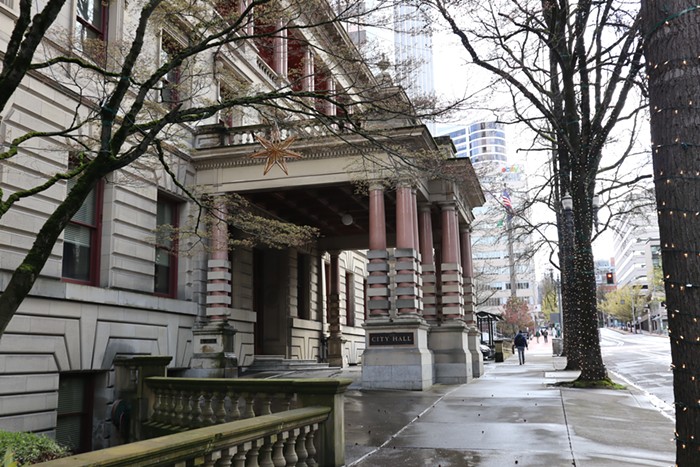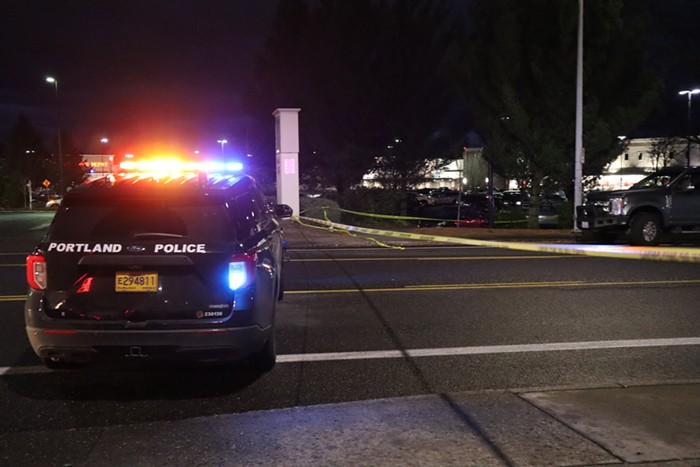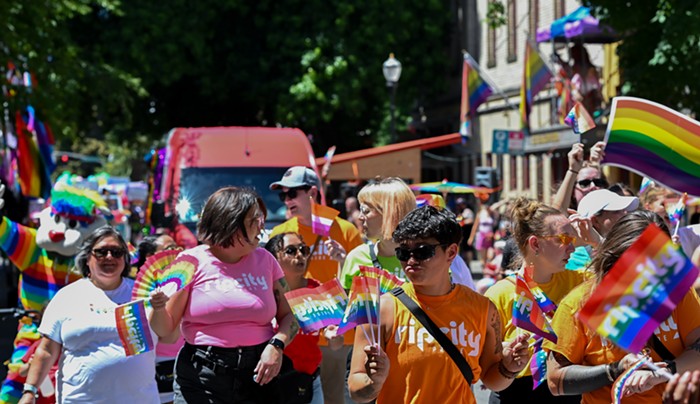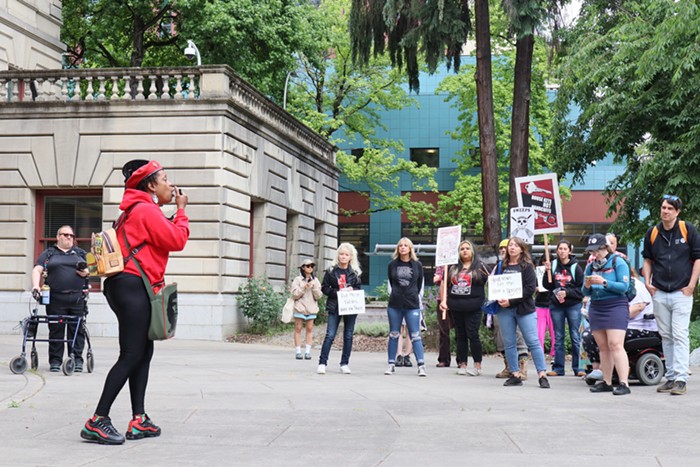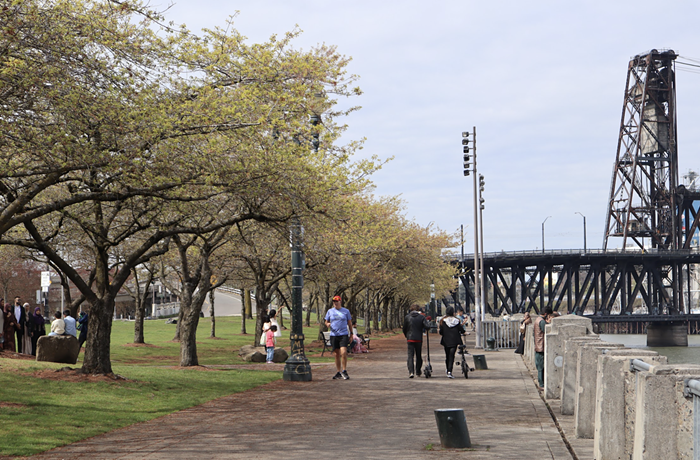
Portland streets are about to change to help support life during COVID-19.
Since Gov. Kate Brown issued a stay-at-home order last month, car trips in Portland have decreased by nearly 50 percent, according to the Portland Bureau of Transportation (PBOT). Meanwhile, taking a walk or jog is one of the few recreational activities Portlanders can safely do outside their homes. On Tuesday, City Commissioner Chloe Eudaly, who oversees PBOT, announced a new plan to adapt Portland streets to the new COVID-19 norm.
Called the “Slow Streets|Safe Streets Initiative,” the plan will reconfigure streets to make social distancing easier, accommodate more pedestrians and bikers, and make Portland’s eventual re-opening a little smoother.
The plan has three components: Adding infrastructure to neighborhood roads that will eliminate or slow car traffic, expanding protected pedestrian spaces and bike lanes on busy streets, and creating dedicated pick-up spots and loading zones on commercial streets, so people can safely social distance even after Portland businesses start to re-open.

“We’re looking at two assets of this,” John Brady, a PBOT spokesperson, told the Mercury. “One is right now, when we’re still in the ‘stay home, save lives,’ period. … And at some point, we’re going to re-open the city. As we do that, we’re going to need more space where people can practice social distancing.”
Several other cities across the United States and around the world have also adapted their street makeups as COVID-19 has changed traffic patterns. On the West Coast, both Seattle and San Francisco have closed miles of their streets to cars.
Brady said PBOT hadn’t yet finalized plans on where all the changes will take place, and that the bureau plans to hold digital community meetings over the next couple weeks to get additional input. He added that PBOT will prioritize areas that are already lacking in sidewalks, and high-traffic areas with a lot of businesses.
“There are places that don’t right now have sidewalks,” Brady said. “If you’re an essential worker and you’re walking to transit, and someone else is walking there as well, it’s hard to keep a social distance without a sidewalk.”

